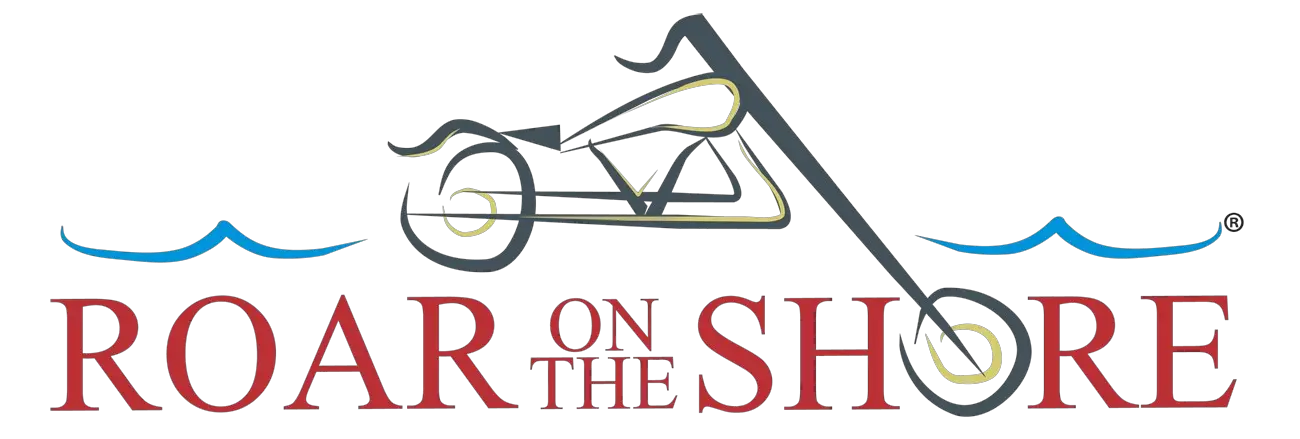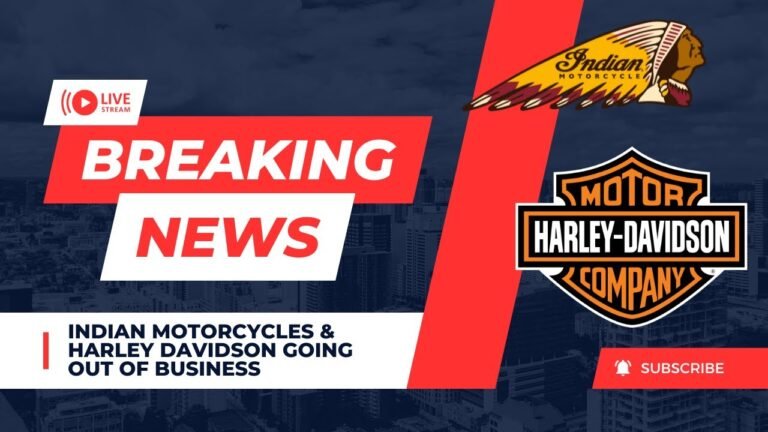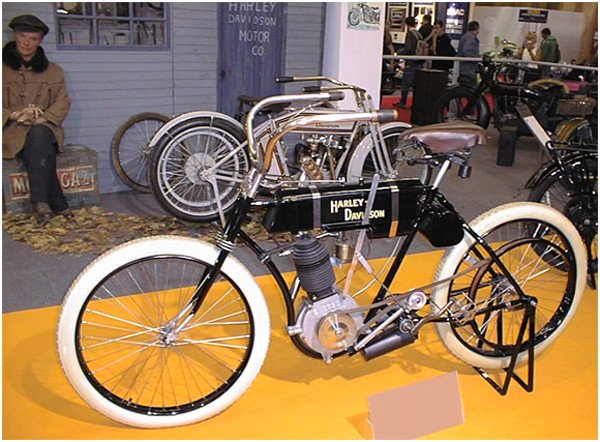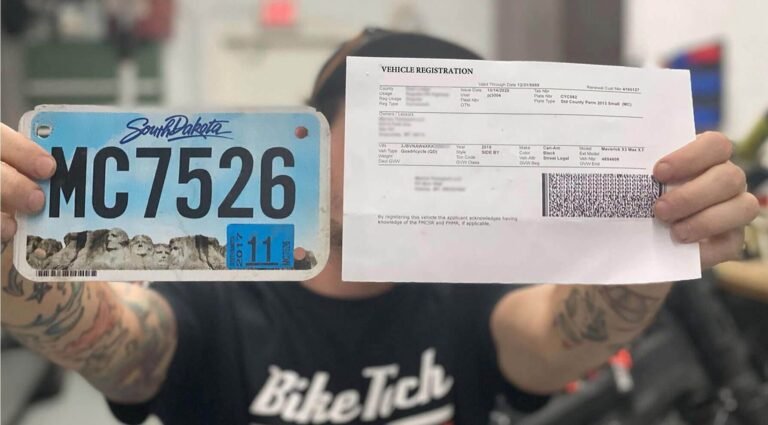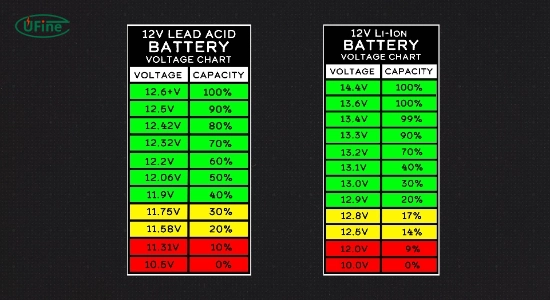Is Harley Davidson in Trouble? Navigating Market Challenges
Are you a fan of the roaring engines and classic design of Harley Davidson motorcycles? You might be wondering if your favorite brand is facing challenges lately.
With whispers of financial woes and shifting market dynamics, the question arises: Is Harley Davidson in trouble? This iconic brand has been synonymous with freedom and adventure, but recent developments have sparked concerns among enthusiasts and investors alike. You’ll want to know what’s happening with Harley Davidson and what it means for the future of this legendary company.
Dive into the facts, figures, and expert opinions that will keep you informed and engaged. Don’t miss out on understanding the twists and turns of Harley Davidson’s current journey.
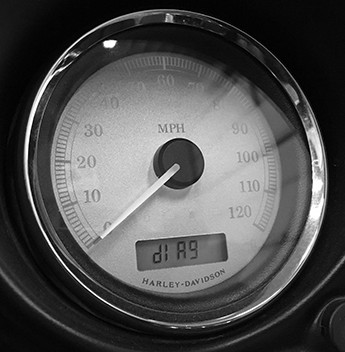
Credit: www.fuelmotousa.com
Market Competition
Harley Davidson faces increasing competition from new motorcycle brands offering electric and budget-friendly options. The market’s shift towards eco-friendly transportation challenges their traditional models. Their iconic brand image alone may not be enough to maintain market dominance.
Harley Davidson has long been a symbol of freedom and adventure on the open road. But is it facing trouble from market competition? As new players enter the motorcycle industry, Harley must navigate a landscape filled with challenges that could redefine its future. You might wonder if these emerging brands and price wars are shaking Harley’s throne. Let’s dive into how these factors are shaping Harley Davidson’s journey.Emerging Brands
In recent years, a wave of emerging brands has entered the motorcycle scene. Many of these newcomers focus on innovation and electric technology. They offer sleek designs and eco-friendly alternatives, capturing the attention of younger riders. You might have seen brands like Zero Motorcycles gaining traction. These brands are appealing because they address modern concerns—like sustainability and efficiency—head-on. As a rider, you’re likely interested in how Harley Davidson plans to stay competitive.Price Wars
Price wars are another battle Harley Davidson faces. Competing brands often introduce budget-friendly models, enticing cost-conscious consumers. The question is, how does Harley respond? Harley has traditionally been a premium brand, known for its quality and craftsmanship. But the pressure to remain competitive might lead to price adjustments or new model releases. As a Harley fan, consider what you value most: the brand’s legacy or its ability to adapt? The ongoing price wars compel Harley to balance its iconic status with the need for affordability. How will this affect your decision to ride a Harley? It’s a crucial question for both loyalists and potential new riders.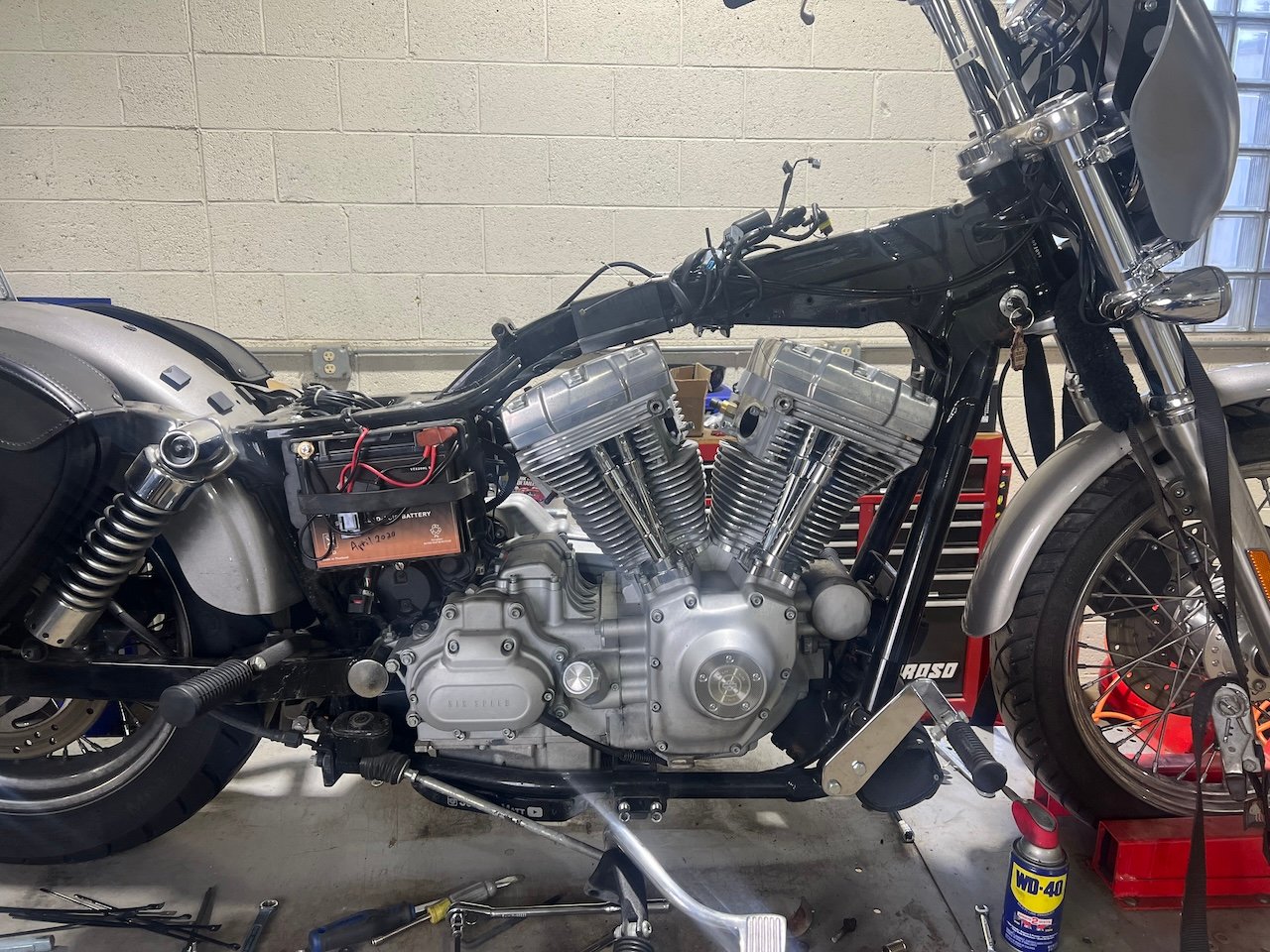
Credit: info.sscycle.com
Changing Consumer Preferences
Harley Davidson, a name synonymous with roaring engines and freedom on the open road, is facing a challenge. The winds of change are blowing, and consumer preferences are shifting rapidly. What does this mean for the iconic motorcycle brand? Let’s take a closer look at how these evolving tastes are impacting Harley Davidson’s future.
Shift To Electric Vehicles
Electric vehicles are no longer the future; they are the present. As more people become environmentally conscious, the demand for electric bikes is accelerating. Harley Davidson has ventured into this realm with their LiveWire model, but will it be enough to attract the eco-friendly crowd?
Think about your last trip to a city. Did you notice the increase in electric scooters and bikes zipping around? This is the change Harley Davidson needs to embrace more fully. How can they capture the hearts of those who prioritize sustainability over tradition?
Demographic Trends
The typical Harley rider is evolving. Younger generations are leaning towards versatile and tech-savvy modes of transport. They want connectivity and customizability in their vehicles, often prioritizing these features over the classic rumble of a V-twin engine.
Consider your friends or family who are in their twenties or thirties. Are they more inclined towards a sleek, smart ride rather than a traditional cruiser? Harley Davidson must adapt to these demographic shifts to remain relevant. What strategies can they implement to appeal to younger riders?
Changing consumer preferences are not just a challenge; they are an opportunity for Harley Davidson. By adapting to these shifts, they can continue to be the brand that symbolizes freedom, albeit in a new era. What would you like to see from Harley Davidson as they navigate these changes?
Economic Factors
When you think about Harley Davidson, the iconic roar of its engines might come to mind. Yet, beyond the sound and style, economic factors play a crucial role in shaping its journey. These factors can either fuel its growth or stall its momentum. Let’s dive into how global economic trends and trade policies are impacting Harley Davidson.
Global Economic Slowdown
The world economy has been facing turbulent times. Sluggish growth rates in major economies can tighten the purse strings of consumers. When people are cautious about spending, luxury items like high-end motorcycles might take a back seat. Have you ever had to rethink a big purchase because of uncertain financial times? It’s a reality Harley Davidson has to grapple with, as it aims to keep its appeal high even when wallets are tight.
Furthermore, the fluctuating currency values can affect Harley’s overseas sales. A stronger dollar might make their bikes pricier in foreign markets. This isn’t just a theory; it’s a challenge that can directly affect their bottom line. How does Harley adapt its strategy to ensure global competitiveness amid these currency shifts?
Tariffs And Trade Barriers
Tariffs and trade barriers are more than just headlines—they’re real hurdles for companies like Harley Davidson. With rising tariffs, the cost of importing essential components can increase, inflating production costs. Imagine planning a budget for your dream bike only to find out it’s priced out of reach due to these tariffs. It’s a scenario both consumers and the company dread.
Moreover, trade tensions between countries can disrupt supply chains. Harley’s sourcing might face delays or increased costs, affecting product availability. It’s akin to planning a road trip and hitting unexpected detours—frustrating and costly. How can Harley navigate these barriers to ensure they deliver timely and affordable products?
In these challenging times, Harley Davidson must strategize carefully. Whether it’s adapting to economic shifts or maneuvering through trade complexities, each decision impacts its legacy and future. What do you think Harley’s next move should be to stay ahead?
Brand Perception
Harley Davidson faces challenges as brand perception shifts. Younger riders seek modern alternatives, affecting sales. Loyal customers worry about innovation. This legendary brand must adapt to maintain relevance.
### Brand Perception Harley-Davidson has long been a symbol of freedom and rebellion on the road. But how is the brand perceived today? As times change, so do consumer attitudes. It’s essential to understand if Harley-Davidson still holds the same allure or if it’s losing ground to modern competitors. Harley-Davidson once dominated the motorcycle world with its iconic designs and roaring engines. These elements built a strong image, but is that enough in today’s fast-paced world? You might wonder if the brand has managed to keep up with evolving tastes and preferences. ###Cultural Relevance
Cultural relevance can make or break a brand. Harley-Davidson has historically been tied to American culture and the spirit of the open road. But does this connection still resonate with younger generations? Many young people today prioritize sustainability and technology over tradition. Is Harley adapting its image to fit this new cultural landscape? It’s crucial for brands to evolve with cultural shifts to stay relevant. Are Harley’s marketing strategies capturing the imagination of today’s diverse audience? ###Lifestyle Appeal
Harley-Davidson has always been more than just a motorcycle brand; it’s a lifestyle. But does this lifestyle still appeal to modern consumers? In an era of social media and digital experiences, people might be seeking new ways to express themselves. Is Harley connecting with these desires? Think about your own lifestyle choices. Would a Harley fit into your life, or does it seem like a relic of the past? Analyzing this could reveal much about Harley’s current standing. Engage with these questions as you consider the future of Harley-Davidson. The answers might surprise you, or even inspire a new perspective on this legendary brand.Innovation And Adaptation
Harley Davidson faces challenges in today’s rapidly changing market. Innovation and adaptation are crucial for survival. Shifting consumer preferences and new technologies demand creative solutions and agile strategies.
In the fast-paced world of motorcycles, Harley Davidson stands as a symbol of tradition and heritage. But even icons must evolve to survive. The question looms: Is Harley Davidson in trouble? The answer lies in their ability to innovate and adapt. As someone who’s always admired Harley’s roaring engines and timeless design, I recently wondered if the brand could keep up with the ever-changing automotive landscape. My first ride on a Harley was a thrilling experience, but I couldn’t help but think about its future in a world that demands more than just power and style. Harley Davidson’s journey into innovation and adaptation is not just about changing their bikes—it’s about transforming their entire approach. ###R&d Investments
Harley Davidson is channeling significant resources into research and development. This isn’t just about tweaking old models but creating something truly groundbreaking. By investing in R&D, Harley is signaling its commitment to the future. They’re exploring new technologies that could redefine what a Harley bike is. Think about electric bikes and advanced materials—Harley’s not just keeping up; they’re aiming to lead. This is exciting for anyone who’s ever dreamed of owning a piece of the future of biking. ###New Product Lines
The introduction of new product lines is another step in Harley’s adaptive strategy. They’re not just sticking to their classic cruisers. Harley is venturing into new territories with models like the Pan America, which targets adventure bikers. This move is not just about attracting new customers; it’s about reshaping the brand’s identity. The question you might ask is: Will these new offerings resonate with traditional Harley enthusiasts? The answer isn’t clear yet, but the willingness to diversify is a strong statement of intent. What do you think Harley should focus on in their journey of innovation and adaptation? Do you see yourself on one of these new models, or is the classic Harley still your ride of choice?Financial Health
Harley Davidson faces challenges in its financial health. The iconic brand has been a leader in the motorcycle industry for years. Yet, recent trends show some concerns. Understanding their financial status is crucial for stakeholders. Let’s delve into their sales performance and debt management.
Sales Performance
Sales have fluctuated over recent years. The brand has a strong loyal customer base. Still, attracting new customers is crucial. Younger generations often seek different styles and features. This shift impacts Harley Davidson’s sales numbers. The company is trying to adapt and innovate. New models aim to appeal to diverse audiences. This strategy may help stabilize sales.
Debt Management
Managing debt is essential for Harley Davidson. The company has taken steps to address this. They have restructured some financial obligations. This approach helps in maintaining financial stability. Interest rates and financial markets impact their strategy. Keeping debt at manageable levels is critical. It allows the company to invest in growth opportunities. Prudent debt management can enhance long-term sustainability.
Strategic Partnerships
Harley Davidson faces challenges in the market, sparking talks of strategic partnerships. Collaborations might offer a path to stability. Exploring new alliances could help Harley Davidson navigate current difficulties and secure its future.
In the evolving landscape of the motorcycle industry, strategic partnerships have become a critical aspect of Harley Davidson’s efforts to stay competitive and innovative. By aligning with key players in various sectors, Harley aims to enhance its offerings and reach a broader audience. These collaborations are not just about survival; they are strategic moves to solidify its position in an ever-changing market.Collaborations With Tech Companies
Harley Davidson has ventured into the tech realm to modernize its motorcycles. Partnering with leading tech companies, they are integrating cutting-edge technology into their bikes, making them more appealing to tech-savvy riders. These collaborations are crucial as they focus on developing electric motorcycles and advanced safety features. Imagine riding a Harley equipped with the latest navigation systems and connectivity options. This isn’t just a dream; it’s a reality thanks to these tech partnerships. Harley is ensuring that their bikes are not only powerful machines but also smart devices on wheels.Joint Ventures
Joint ventures have been another strategic move for Harley Davidson, allowing the company to expand its market reach. By teaming up with other industry giants, Harley can tap into new customer bases and share resources for mutual growth. This approach helps them reduce risks while exploring new opportunities. Consider the potential of a joint venture with an international brand. Such a partnership could open doors to new markets, offering Harley a chance to increase its global footprint. This strategic move not only boosts sales but also strengthens brand recognition worldwide. Are these strategic partnerships enough to keep Harley Davidson ahead in the race? Only time will tell, but one thing is clear: Harley is not sitting idly by. They are actively seeking innovative ways to enhance their brand and secure their place in the future of the motorcycle industry. What do you think? Could these collaborations redefine what it means to ride a Harley?
Credit: www.youtube.com
Future Outlook
Harley Davidson faces challenges as it navigates economic shifts and changing consumer preferences. Concerns arise over declining sales and competition from electric motorcycles. Adapting strategies could be crucial for future success.
The future outlook for Harley Davidson is a topic of great interest to motorcycle enthusiasts and industry analysts alike. As the iconic brand navigates a rapidly changing market, the question arises: what lies ahead for Harley Davidson? The company is not only addressing current challenges but also exploring potential growth areas and long-term strategies to secure its place in the industry. Let’s delve deeper into these aspects and consider how Harley Davidson can steer towards a prosperous future.Potential Growth Areas
Harley Davidson is tapping into new markets with innovative products. One area is the electric motorcycle segment. With growing environmental awareness, electric bikes are gaining traction. Harley’s LiveWire is a step in the right direction, attracting younger and eco-conscious riders. Another promising area is international expansion. The demand for motorcycles is rising in Asia and Latin America. Harley is increasing its presence here, customizing bikes to cater to local preferences. The company is also focusing on lifestyle branding. Harley Davidson is more than just a bike; it represents a lifestyle. Expanding merchandise and brand collaborations can attract non-riders to the Harley family.Long-term Strategies
Harley Davidson is committed to innovation and adaptation. The company is investing in research and development to stay ahead of trends. This includes developing more electric models and enhancing existing ones. Strengthening dealer networks is another priority. Harley is working closely with dealers to improve customer experiences. This ensures that the brand remains relevant and accessible to all. Harley is also enhancing its digital presence. In today’s digital age, a strong online presence is crucial. By improving its online platforms, Harley can engage with a broader audience and boost sales. The future of Harley Davidson depends on its ability to adapt and innovate. What do you think? Can Harley leverage these strategies to revitalize its iconic brand? Your thoughts and engagement could shape the conversation around this legendary company.Frequently Asked Questions
Is Harley-davidson In Trouble Financially?
Harley-Davidson has faced financial challenges recently. The company has seen fluctuations in sales and revenue. They continue efforts to revitalize their brand and product offerings to attract new customers. Financial stability remains a focus as they adapt to changing market demands and consumer preferences.
Why Is Harley-davidson Declining?
Harley-Davidson faces declining sales due to aging customer base, high prices, and shifting consumer preferences. Increased competition from other motorcycle brands and electric vehicle trends also impact growth. Efforts to attract younger riders and expand international markets are crucial for revival.
Does Harley-davidson Go Out Of Business?
Harley-Davidson is not out of business. It continues to operate globally, producing motorcycles and related products. The company adapts to market demands and focuses on innovation to maintain its presence in the industry. Financial challenges exist, but Harley-Davidson remains a significant player in the motorcycle market.
Are Harley Davidsons Losing Popularity?
Harley Davidson faces challenges with shifting consumer preferences and competition. The brand remains iconic, but younger riders favor diverse motorcycle options. Harley’s efforts to innovate and expand into electric bikes aim to attract new customers and sustain popularity. Overall, Harley Davidson still holds a strong presence in the motorcycle industry.
Conclusion
Harley Davidson faces challenges in a changing market. Competition grows tougher every year. New trends demand adaptation. Electric bikes and sustainability are key areas. The brand must innovate to stay relevant. Loyal fans still support Harley’s legacy. There’s potential for growth with the right strategy.
Strengthening global presence could help. Embracing change is crucial for future success. The journey isn’t easy, but it’s possible. Harley Davidson’s story continues.
